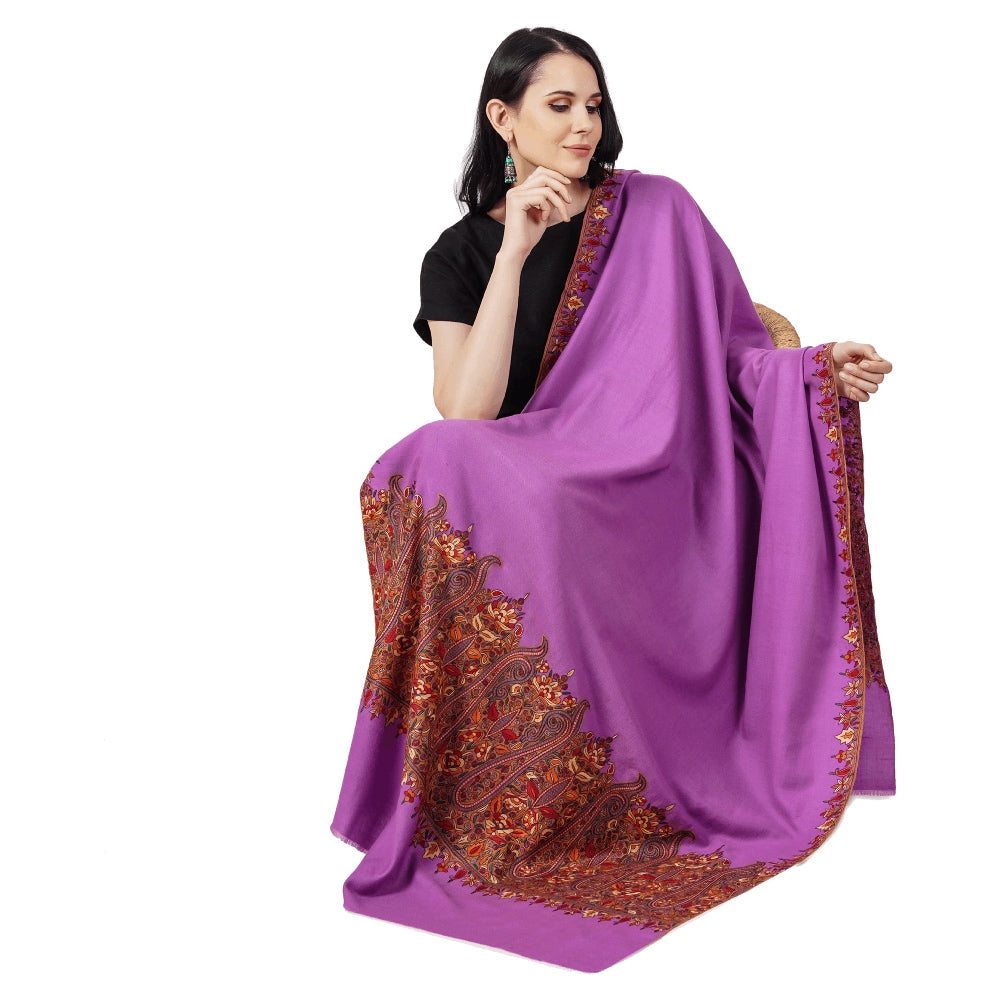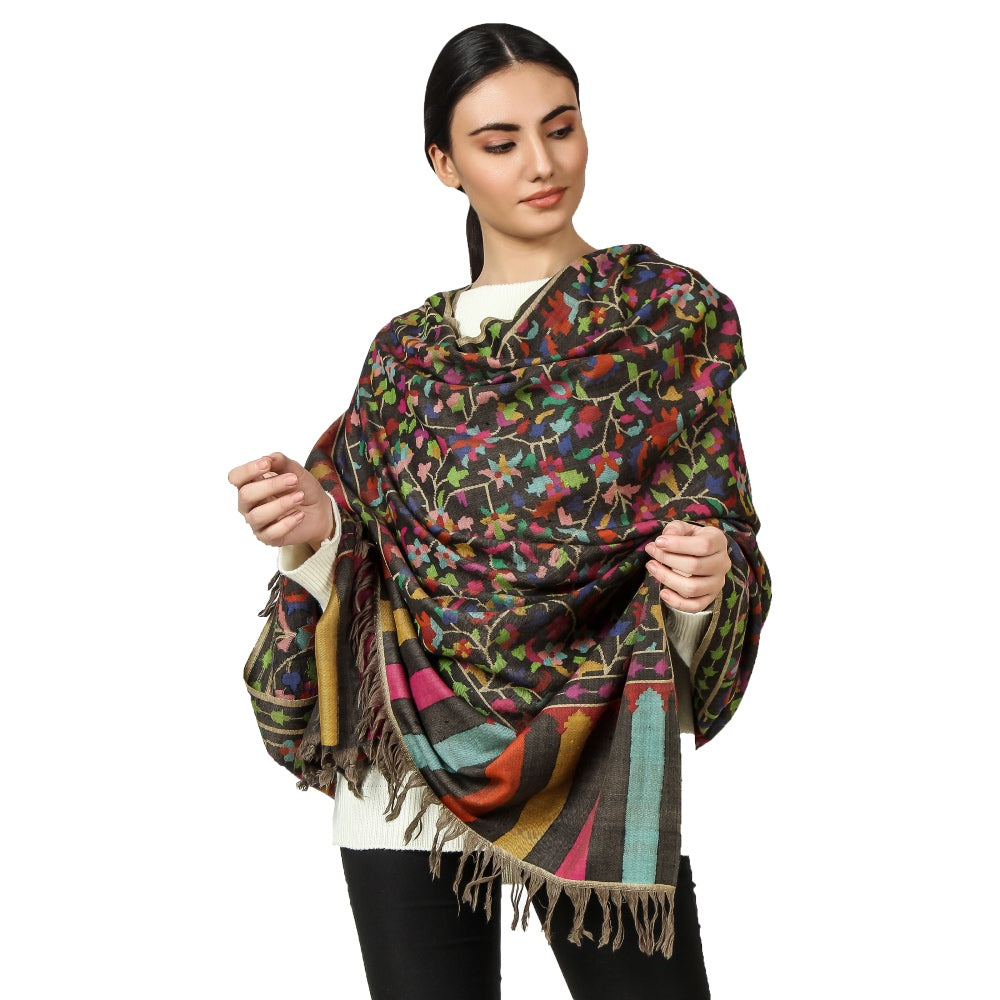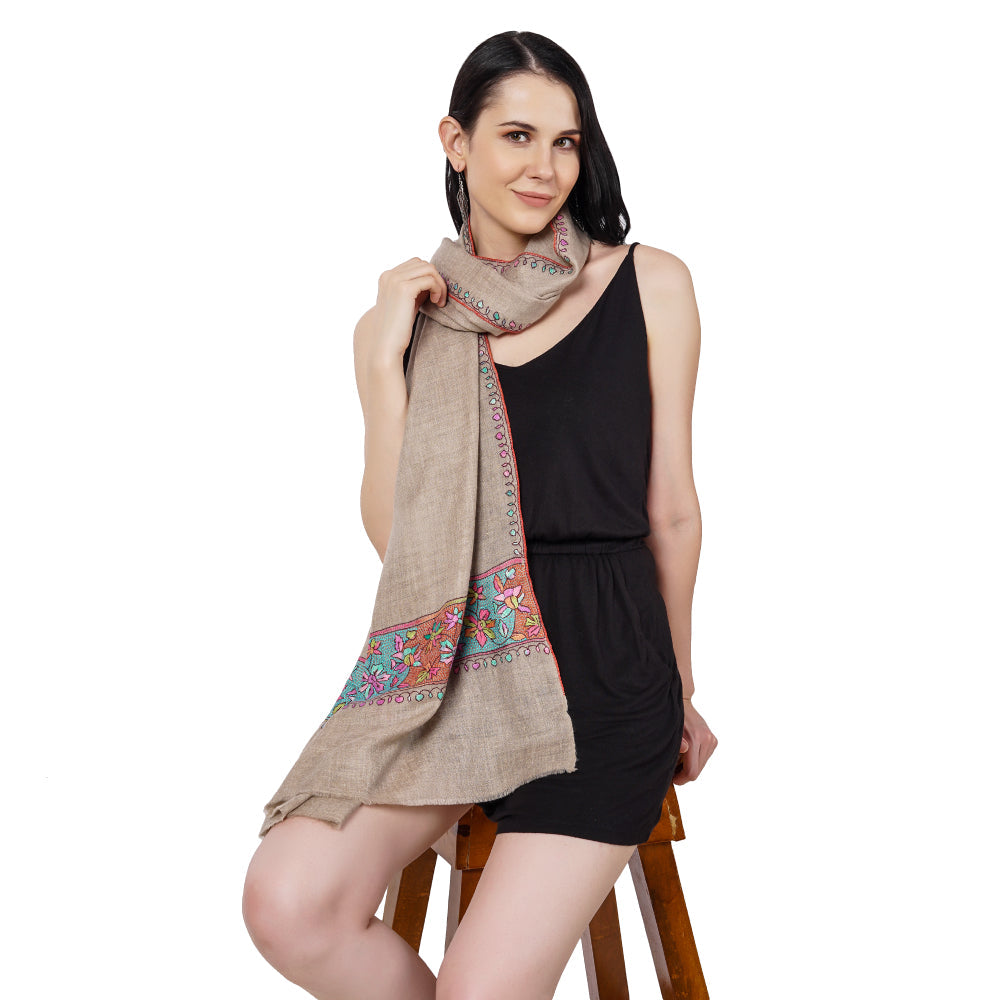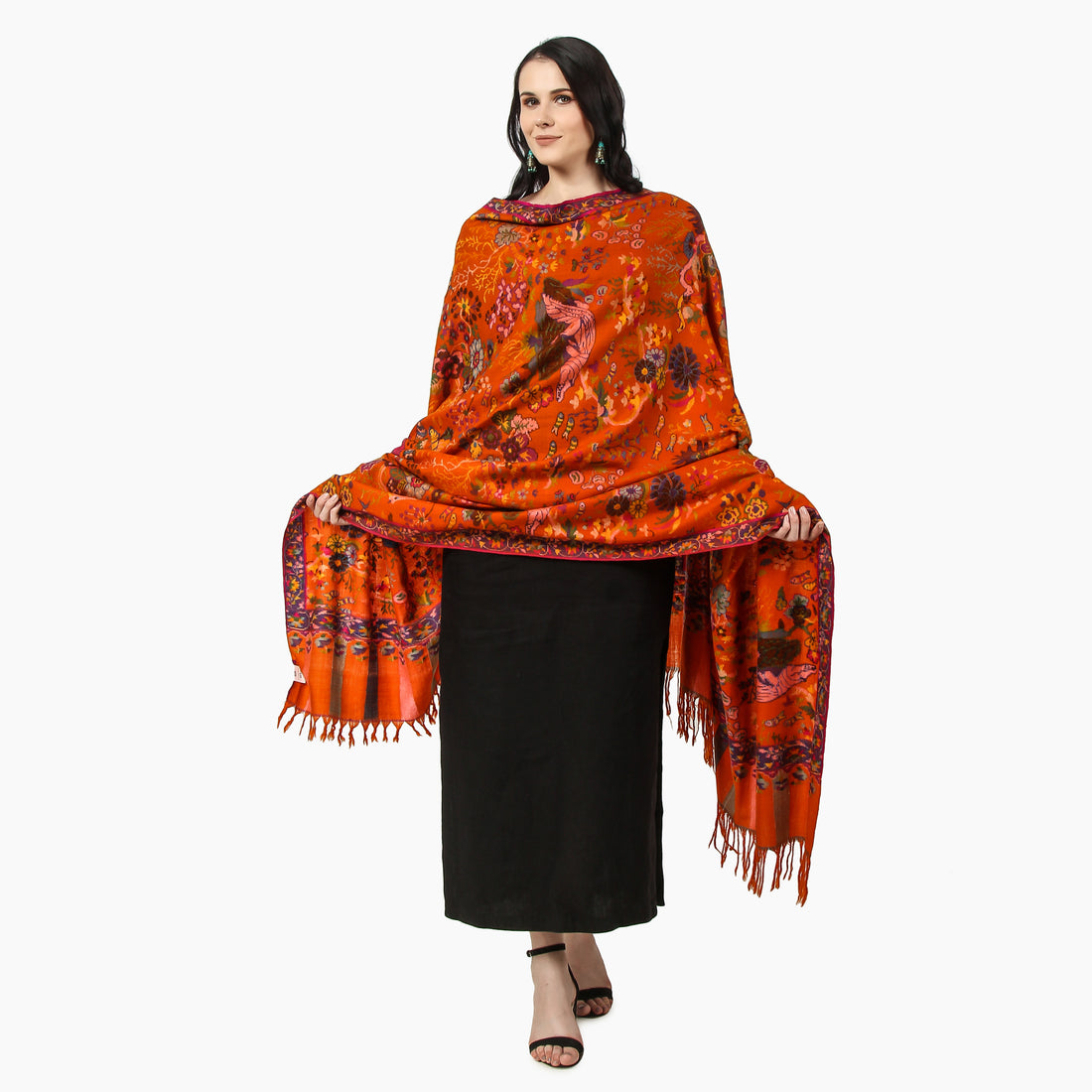
Where do pashmina shawls come from?
Share
Pashmina shawls are a type of luxury textile made from the wool of the Pashmina goat. The wool is collected from the underbelly of the goat and is known for its softness, warmth, and lightweight feel. Pashmina shawls are highly valued for their beauty and quality, and are often used as high-end garments or given as gifts to royalty and dignitaries. They are traditionally produced in the Himalayan region of Kashmir, and are woven by skilled artisans using traditional techniques.
Importance of Pashmina Shawls
Pashmina shawls are highly valued for their softness, warmth, and beauty, making them a prized possession for many. They are a luxurious item that adds elegance and sophistication to any outfit, and are often worn to special events such as weddings, formal dinners, and other important occasions. Pashmina shawls are also important from a cultural and historical perspective. They have been produced in the Himalayan region of Kashmir for centuries, and the craftsmanship involved in weaving them is a testament to the rich cultural heritage of the region. Pashmina shawls are traditionally made using traditional techniques that have been passed down from generation to generation, and the skill required to produce these shawls is highly respected. In addition, Pashmina shawls are an important source of income for many communities in the region, as they provide employment opportunities for skilled artisans and weavers. Overall, the importance of Pashmina shawls lies in their beauty, cultural significance, and economic value, making them a valuable and highly sought-after item.
Brief history of Pashmina Shawls

The history of Pashmina shawls can be traced back to the ancient Kashmiri region of India, where they were first woven by skilled artisans. The wool used to make Pashmina shawls comes from the underbelly of the Pashmina goat, which is native to the Himalayan region of South Asia. The wool is known for its softness, warmth, and lightweight feel, making it ideal for use in shawls, scarves, and other high-end garments.
Pashmina shawls were highly valued in the past and were often given as gifts to royalty and other dignitaries. They were also used as a form of currency and were traded throughout the world. In fact, the famous explorer Marco Polo is said to have described Pashmina shawls as "soft as a spider's web" and "so fine that it could be passed through a ring."
Over time, the art of weaving Pashmina shawls spread throughout the region, and today they are produced in various parts of South Asia. The production process is a painstaking one, and involves several steps including cleaning and carding the wool, spinning it into yarn, and then weaving the yarn into a shawl using traditional techniques.
The popularity of Pashmina shawls has only increased over the years, with many people around the world valuing them for their beauty, quality, and warmth. Today, Pashmina shawls are often seen as a symbol of luxury and elegance, and are worn by people of all ages and backgrounds. The craftsmanship involved in producing Pashmina shawls is a testament to the rich cultural heritage of the region, and the continued popularity of these shawls is a reflection of their enduring beauty and quality.
Also read: A Journey through time : The history of Pashmina Shawls
What is Pashmina?
Pashmina is a type of fine wool that comes from the underbelly of the Pashmina goat, which is native to the Himalayan region of South Asia. The wool is known for its softness, warmth, and lightweight feel, making it ideal for use in high-end textiles such as shawls, scarves, and other garments. Pashmina wool is highly valued for its quality, and is considered to be one of the finest natural fibers in the world. The term "Pashmina" is often used to refer to shawls and other garments made from this wool, which are known for their beauty and luxury. The production of Pashmina wool and Pashmina shawls is a traditional craft that has been practiced for centuries in the Himalayan region, and involves skilled artisans who use traditional techniques to create these high-quality textiles. Today, Pashmina shawls are popular around the world, and are often seen as a symbol of luxury and elegance. They are highly sought-after for their beauty, quality, and warmth, and are often worn to special events or given as gifts to mark important occasions.
Also read: What is GI Pashmina?
History of Pashmina
The history of Pashmina can be traced back to ancient times in the Himalayan region of South Asia, where the Pashmina goat was first domesticated. The wool from the underbelly of these goats was known for its softness, warmth, and lightweight feel, and was highly valued by the people of the region. Over time, the art of weaving Pashmina wool into shawls and other textiles spread throughout the region, and Pashmina shawls became a symbol of luxury and elegance.
During the Mughal Empire, which ruled much of South Asia from the 16th to the 19th century, Pashmina shawls were highly prized by the royal court and were often given as gifts to foreign dignitaries. The production of Pashmina shawls became a major industry in Kashmir, which was known for its skilled weavers and artisans.
In the 19th century, the British began to take an interest in Pashmina shawls, and the textiles were exported to Europe and other parts of the world. The shawls became increasingly popular among wealthy Europeans, who valued them for their beauty and quality. However, the increased demand for Pashmina shawls led to overgrazing of the Pashmina goats and a decline in the quality of the wool.
Today, the production of Pashmina shawls is still a traditional craft in the Himalayan region, and the textiles are highly valued for their beauty and quality. The production process involves several steps, including cleaning and carding the wool, spinning it into yarn, and then weaving the yarn into a shawl using traditional techniques. Pashmina shawls are often worn to special events or given as gifts to mark important occasions, and are seen as a symbol of luxury and elegance around the world.
Also read: 30 most frequently asked questions about Cashmere and Pashmina
Difference between Pashmina and Cashmere
Pashmina and Cashmere are both types of luxury wool, but there are some differences between the two.
Pashmina comes from the underbelly of the Pashmina goat, which is native to the Himalayan region of South Asia. The wool is known for its softness, warmth, and lightweight feel, making it ideal for use in high-end textiles such as shawls, scarves, and other garments. Pashmina wool is finer than Cashmere wool, with a diameter of around 12-16 microns.
Cashmere, on the other hand, comes from the undercoat of the Cashmere goat, which is found in several parts of the world, including Mongolia, China, and Iran. Cashmere wool is also known for its softness, warmth, and lightweight feel, and is often used in high-end garments such as sweaters and scarves. Cashmere wool is slightly coarser than Pashmina wool, with a diameter of around 15-19 microns.
Another difference between Pashmina and Cashmere is their origin. Pashmina wool comes exclusively from the Pashmina goat, which is only found in the Himalayan region of South Asia. Cashmere wool, on the other hand, can come from several different types of goats, including the Cashmere goat, the Tibetan goat, and the Mongolian goat.
In terms of price, Pashmina is generally considered to be more expensive than Cashmere, due to its finer texture and limited availability. Pashmina shawls and other textiles are highly sought-after for their beauty and quality, and are often seen as a symbol of luxury and elegance. Cashmere, while still a luxury fiber, is generally more widely available and less expensive than Pashmina.
Overall, while Pashmina and Cashmere share many similarities, there are some key differences between the two, including their origin, texture, and price. Both fibers are highly valued for their softness, warmth, and luxury feel, and are often used in high-end textiles and garments.
Also read: Is Pashmina and Cashmere the Same?
Where do Pashmina Shawls come from?
Geographic origin of Pashmina Shawls

Pashmina shawls originate from the Himalayan region of South Asia, which includes parts of India, Pakistan, Nepal, and Tibet. The wool used to make Pashmina shawls comes from the underbelly of the Pashmina goat, which is native to this region. The harsh climate and high altitude of the Himalayas are believed to contribute to the quality and unique characteristics of Pashmina wool.
Cultural significance of Pashmina Shawls

Pashmina shawls have a long history of cultural significance in the Himalayan region. The shawls have been worn for centuries by the people of the region as a symbol of luxury and elegance. In particular, Pashmina shawls have played an important role in the culture and traditions of Kashmir, where the production of Pashmina textiles has been a major industry for centuries.
Pashmina shawls are often given as gifts to mark important occasions such as weddings or religious ceremonies. They are also worn by both men and women as a way to stay warm in the harsh mountain climate, and are an important part of traditional dress in the region.
How Pashmina Shawls are made

The production of Pashmina shawls is a highly skilled craft that involves several steps. First, the wool is collected from the underbelly of the Pashmina goat during the spring molting season. The wool is then cleaned, carded, and spun into yarn, which is then woven into a shawl using traditional techniques.
The weaving process is typically done by hand, using a traditional loom. Skilled weavers use intricate patterns and designs to create the unique look and feel of Pashmina shawls. The process can take several months to complete, and the resulting shawls are highly valued for their beauty, softness, and warmth.
Pashmina Shawls production process

The production of Pashmina shawls is a complex process that involves several stages, including collecting and cleaning the wool, spinning the yarn, and weaving the shawl. The wool is collected from the underbelly of the Pashmina goat during the spring molting season, when the fibers are at their softest and most luxurious.
Once the wool has been collected, it is cleaned and carded to remove any impurities or debris. The fibers are then spun into yarn using a traditional spinning wheel, and are ready to be woven into a shawl.
The weaving process is typically done by hand, using a traditional loom. Skilled weavers use intricate patterns and designs to create the unique look and feel of Pashmina shawls. The process can take several months to complete, and the resulting shawls are highly valued for their beauty, softness, and warmth.
Types of Pashmina Shawls
Different types of Pashmina Shawls
Pashmina shawls come in a variety of styles and designs, each with its own unique characteristics. Some of the most popular types of Pashmina shawls include:
1. Classic Pashmina Shawls

Classic Pashmina shawls are made from 100% Pashmina wool and are known for their softness and warmth. They are typically available in a range of natural colors, such as beige, brown, and grey.
2. Jamawar Pashmina Shawls

Jamawar Pashmina shawls are characterized by their intricate paisley and floral designs. They are typically made using a blend of Pashmina wool and silk, which gives them a soft, lustrous finish.
3. Embroidered Pashmina Shawls

Embroidered Pashmina shawls feature intricate embroidery and beadwork, which adds a touch of elegance and sophistication to the design. They are typically available in a range of colors and designs, and are often used for special occasions such as weddings and formal events.
4. Kani Pashmina Shawls

Kani Pashmina shawls are made using a traditional weaving technique that involves small wooden sticks called "kanis". The process is time-consuming and requires a high level of skill, but the resulting shawls are highly valued for their intricate designs and patterns.
Variations in design, color, and pattern

In addition to the different types of Pashmina shawls, there are also many variations in design, color, and pattern. Pashmina shawls are available in a wide range of colors, from classic neutrals to bright, bold hues. They can also feature a variety of patterns and designs, from simple stripes and checks to intricate paisleys and florals.
The designs and patterns used in Pashmina shawls are often inspired by the rich cultural heritage of the Himalayan region, and can vary depending on the region and the traditions of the local people. Some Pashmina shawls feature traditional motifs and designs that have been passed down through generations, while others are more modern and contemporary in style. Overall, the wide range of variations in design, color, and pattern make Pashmina shawls a versatile and timeless accessory that can be worn in a variety of settings and styles.
Pashmina Shawls and the Fashion Industry

Pashmina shawls have been a staple of the fashion industry for many years, prized for their luxurious feel and timeless elegance. In this section, we'll explore the role of Pashmina shawls in the fashion industry, how they are used in fashion, and their continuing popularity.
Pashmina Shawls in the Fashion Industry
Pashmina shawls have long been associated with high-end fashion, and are frequently seen on the runways of major fashion shows around the world. They are prized for their softness, warmth, and versatility, and can be worn in a variety of styles and settings.
How Pashmina Shawls are used in Fashion

Pashmina shawls can be used in a variety of ways in the world of fashion. They are often draped over the shoulders or wrapped around the neck to add a touch of elegance and sophistication to an outfit. They can also be worn as a headscarf, or used to accessorize a handbag or clutch.
In addition to their use as a fashion accessory, Pashmina shawls are also often used in the production of high-end garments, such as coats, jackets, and dresses. The softness and warmth of Pashmina wool make it an ideal choice for luxury clothing, and it is highly valued by many of the world's top fashion designers.
Popularity of Pashmina Shawls

Despite the ever-changing trends of the fashion industry, Pashmina shawls have remained a popular choice for many fashion-conscious individuals around the world. Their timeless elegance, versatility, and luxurious feel make them a must-have accessory for any wardrobe.
In recent years, there has been a growing interest in sustainable and ethical fashion, and Pashmina shawls are seen as a more eco-friendly and socially responsible alternative to synthetic fabrics. This has only increased their popularity among fashion consumers, who are looking for ways to make more responsible and sustainable choices in their fashion purchases.
Overall, Pashmina shawls continue to be an important part of the fashion industry, valued for their beauty, warmth, and versatility, as well as their rich cultural heritage and sustainable production practices.
Pashmina Shawls and the Fashion Industry
Pashmina shawls have been a staple of the fashion industry for many years, prized for their luxurious feel and timeless elegance. In this section, we'll explore the role of Pashmina shawls in the fashion industry, how they are used in fashion, and their continuing popularity.
Pashmina Shawls in the Fashion Industry
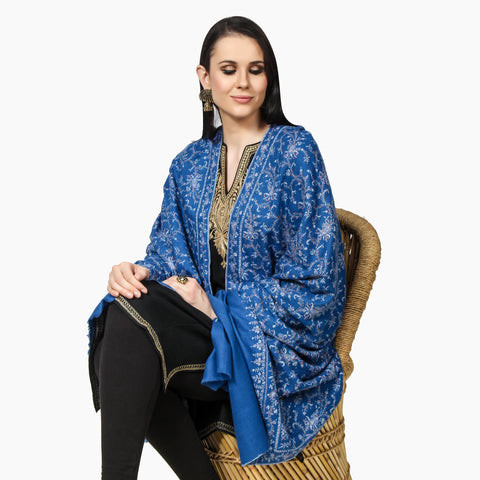
Pashmina shawls have long been associated with high-end fashion, and are frequently seen on the runways of major fashion shows around the world. They are prized for their softness, warmth, and versatility, and can be worn in a variety of styles and settings.
How Pashmina Shawls are used in Fashion
Pashmina shawls can be used in a variety of ways in the world of fashion. They are often draped over the shoulders or wrapped around the neck to add a touch of elegance and sophistication to an outfit. They can also be worn as a headscarf, or used to accessorize a handbag or clutch.
In addition to their use as a fashion accessory, Pashmina shawls are also often used in the production of high-end garments, such as coats, jackets, and dresses. The softness and warmth of Pashmina wool make it an ideal choice for luxury clothing, and it is highly valued by many of the world's top fashion designers.
Popularity of Pashmina Shawls

Despite the ever-changing trends of the fashion industry, Pashmina shawls have remained a popular choice for many fashion-conscious individuals around the world. Their timeless elegance, versatility, and luxurious feel make them a must-have accessory for any wardrobe.
In recent years, there has been a growing interest in sustainable and ethical fashion, and Pashmina shawls are seen as a more eco-friendly and socially responsible alternative to synthetic fabrics. This has only increased their popularity among fashion consumers, who are looking for ways to make more responsible and sustainable choices in their fashion purchases.
Overall, Pashmina shawls continue to be an important part of the fashion industry, valued for their beauty, warmth, and versatility, as well as their rich cultural heritage and sustainable production practices.
Conclusion
Pashmina shawls are a luxury item that has been prized for centuries for their softness, warmth, and beauty. In this article, we have explored the history of Pashmina, the differences between Pashmina and Cashmere, and the types of Pashmina shawls available. We also looked at the cultural significance of Pashmina shawls and how they are made.
One of the key takeaways from this article is the importance of preserving traditional techniques and craftsmanship in the production of Pashmina shawls. Many of the techniques used in Pashmina production have been passed down through generations and represent an important part of the cultural heritage of the region. By supporting artisans who practice traditional techniques, we can help to ensure that this knowledge and expertise are not lost.
Pashmina shawls also play an important role in the fashion industry, with designers and fashion enthusiasts alike embracing their beauty and versatility. As the fashion industry continues to evolve and change, it will be interesting to see how Pashmina shawls continue to be incorporated into new trends and styles.
In conclusion, Pashmina shawls are a valuable and cherished part of our cultural heritage. By understanding their history, production process, and cultural significance, we can gain a deeper appreciation for these beautiful and luxurious items. As consumers, we can also play a role in supporting traditional techniques and craftsmanship, helping to ensure that the art of Pashmina production continues to thrive for generations to come.


